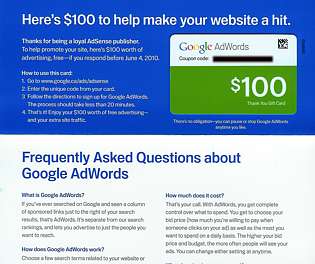Canadian Telco Telus launches a new sub-brand; but this net is far from clear
Beg to Differ loves brands. They’re fun. But we love something more than brands: we love clarity. And there are times when companies need to resist the urge to over-brand their products and services in the interest of keeping life simple for their customers. This is one of those times. Behold the world’s latest unnecessary brand: Optik

A moment of silence for clarity lost

The much larger Telus bought Clearnet, search but then reanimated parts of the corpse to “reskin” itself with the ClearNet colour scheme, physician design frame, and menagerie of cuddly animal mascots. But what really got me is that they did it without the clarity and simplicity that ClearNet was famous for in the first place – and they capped it all with a boring, big-telco name.
Basically, they took the promise of a simple, nimble brand, and tried to hide a lumbering behemoth behind it.
Anyway, why am I complaining about the new “Optik” brand – which actually isn’t a terrible name or hook to build a brand around?
Where to begin?
The “Optik” brand covers TV services delivered through Telus’s the newly installed fiber-optic network in Western Canada, and the Internet services you can get along with them – but only if you get the TV service first. The screen shot above is the landing page for the Internet services. Notice how awkwardly the Optik High Speed fits with the “large / medium / small” logic of the other three offerings.
Is that helping you make a choice as a consumer? Quite the opposite.
Here’s what Joe Natale, the Telus Chief Commercial Officer, says about Optik in today’s Vancouver Sun:
It was time to “really create a brand around both the revolutionary TV capability and the network capability that is now reaching more Western Canadians than ever before. Now that we’re reaching 90 per cent of homes in the top 48 cities in B.C. and Alberta we’ve got some loud statements to make.”
Natale goes on in the same article:
The name Optik reflects the company’s investment in the fibre optic network as well as speaking to clarity. The Telus brand will still be front and centre, and cute animals will still be part of the pitch. But advertisements will also include an unusual animal – a human named Danny, the Telus technician who comes into your living room to show you what Telus TV can do.
Excited? You can meet Danny here (but sorry: I for one don’t want this smarmy kid in my living room).
The problem: it’s complicated.
Or to put it another way: it’s complicatING an already confusing picture – the changing world of consumer telecommunications technology. Consumers are already juggling too many specs and too much techno-jargon in their heads without trying to figure out the difference between “Telus” and “Optik”
Which is why Bell Canada has dropped “Sympatico” and “ExpressVU” brands in favour of just “Bell” with descriptive product names. And Rogers has dropped the redundant “At Home” part of their consumer branding.
What do you think?
I could go on. I often do. But what do you think? Does the new “Optik” brand help you make a buying decision? Or are you like me: pining for the simpler days of bright green frogs and a single, clear, brand? When does branding go too far?







